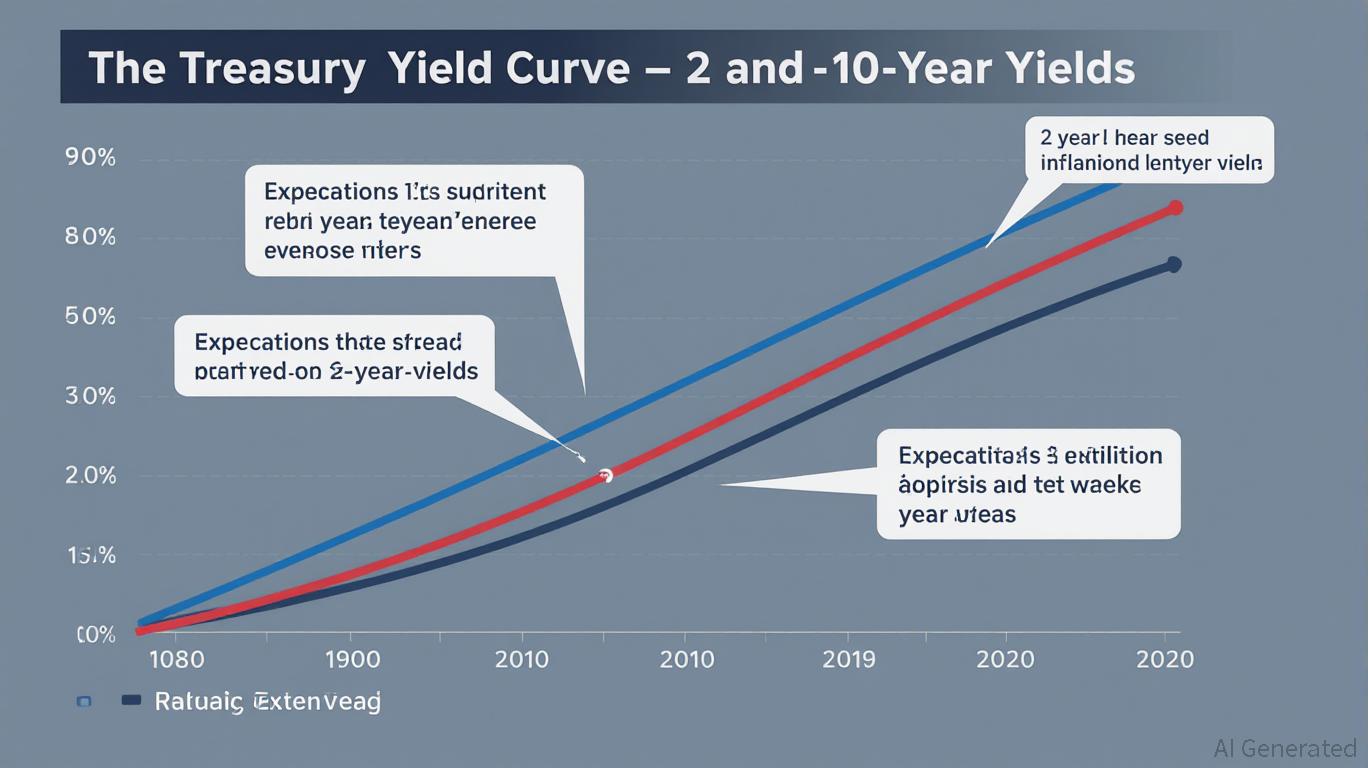
The Federal Reserve’s September 2025 FOMC meeting has become a focal point for investors, as market expectations for rate cuts have shifted dramatically in response to a cooling labor market and evolving inflation dynamics. With the FedWatch Tool now pricing in a 54.3% probability of three rate cuts by year-end, the bond market is recalibrating to a more aggressive easing cycle. This shift, however, is not without nuance. The interplay between economic data, policy uncertainty, and derivative positioning is creating both risks and opportunities for fixed-income investors.
Market Expectations: A Reassessment of the Fed’s Path
The recent downward revisions to U.S. jobs data—cutting 260,000 jobs from May and June reports—have forced a reevaluation of the Fed’s trajectory. While earlier months showed resilience in consumption and employment, August’s weak payroll numbers signaled a softening labor market. This has pushed the market to price in a near-certainty of a 25-basis-point cut at the September meeting, with OIS rates hitting 4.08%. However, Fed officials like James Bullard have cautioned against over-optimism, emphasizing a data-dependent approach and ruling out aggressive cuts to 1.5%.
The Dec-25 Fed Funds futures contract now reflects a target rate of around 4.08% by year-end, implying a cumulative 75-basis-point cut by December. Yet, this path remains contingent on inflation trends. While goods inflation has cooled, core services inflation remains stubbornly elevated, complicating the Fed’s dual mandate of price stability and full employment.
Bond Market Response: Yields, Duration, and Term Premiums
The bond market has responded to these shifting expectations with heightened volatility. Treasury yields have risen sharply, with the 30-year yield breaching 5%—its highest level since 2007—as investors demand higher returns for holding long-term bonds amid inflationary risks. The steepening yield curve, driven by a surge in term premiums, underscores the market’s pricing of deferred rate cuts and prolonged high-rate environments.
The 2-year/10-year yield spread has widened to its widest level in over a decade, reflecting a stark contrast between short-term rate expectations (driven by Fed cuts) and long-term inflation concerns. This divergence has created a unique environment for duration strategies. Investors are increasingly favoring intermediate- to long-term Treasuries, where yields in the 4.5%–5.5% range offer attractive real returns, while short-term instruments trade at lower yields due to anticipated cuts.
SOFR Derivatives: Hedging the Uncertainty
The Secured Overnight Financing Rate (SOFR) market has become a critical arena for managing rate-cut expectations. Two key derivative strategies have emerged:
Deferred Rate Cuts Trade (Dec25-Dec26 SOFR Calendar Spread):
Traders are selling December 2025 SOFR futures and buying December 2026 contracts, betting that the Fed will delay cuts into 2026. This trade gained traction after strong labor market data in early 2025, but recent downward revisions have caused retracements in spread prices. The strategy reflects a belief that the Fed will prioritize inflation control over aggressive easing, even as growth slows.
New Fed Chair Trade (Mar26-Jun26 SOFR Calendar Spread):
This trade involves selling March 2026 SOFR futures and buying June 2026 contracts, anticipating a dovish shift under a new Fed Chair. With Jerome Powell’s term ending in May 2026, investors are pricing in the possibility of accelerated cuts in the latter half of 2026. However, recent economic data has tempered these expectations, leading to a more cautious outlook.
Strategic Opportunities in Treasuries and SOFR-Linked Instruments
For investors, the current environment offers several actionable opportunities:
Barbell Strategy in Treasuries:
A barbell approach—combining short-term instruments (to benefit from near-term rate cuts) and long-term Treasuries (to capture higher yields)—can balance risk and return. The Bloomberg U.S. Treasury Index has delivered a 2.1% total return year-to-date, with coupon income becoming a key driver as capital gains shrink.
SOFR Calendar Spreads for Hedging:
Investors can use SOFR calendar spreads to hedge against timing risks in rate cuts. The deferred rate cuts trade, for instance, allows positioning for a slower 2025 easing cycle while protecting against a more aggressive 2026 scenario.
Liquidity Management via SRF Facilities:
The Federal Reserve’s enhanced Standing Repo Facility (SRF), including early-settlement operations, has stabilized repo markets and reduced hurdle rates. This provides a safety net for leveraged positions in Treasuries and SOFR derivatives, mitigating liquidity risks during volatile periods.
Options-Based Protection:
Swaptions, caps, and floors can offer downside protection against unexpected rate movements. Given the market’s pricing of a 3–3.5% terminal rate in two years, these instruments can lock in favorable rates while retaining upside potential.
Conclusion: Positioning for a Dovish Pivot
The September FOMC meeting is a pivotal moment in the Fed’s 2025 policy path. While the market is pricing in a 25-basis-point cut, the broader narrative of a cooling labor market and mixed inflation trends suggests that the Fed may need to act more aggressively in the coming months. For bond investors, the key lies in balancing duration exposure, leveraging SOFR derivatives to hedge timing risks, and capitalizing on the steep yield curve.
As the Fed navigates its dual mandate, the bond market’s response will continue to evolve. Those who position strategically—whether through Treasuries, SOFR-linked instruments, or liquidity management—stand to benefit from the shifting landscape. The coming months will test the resilience of both the Fed’s policy framework and the market’s ability to adapt to uncertainty.
